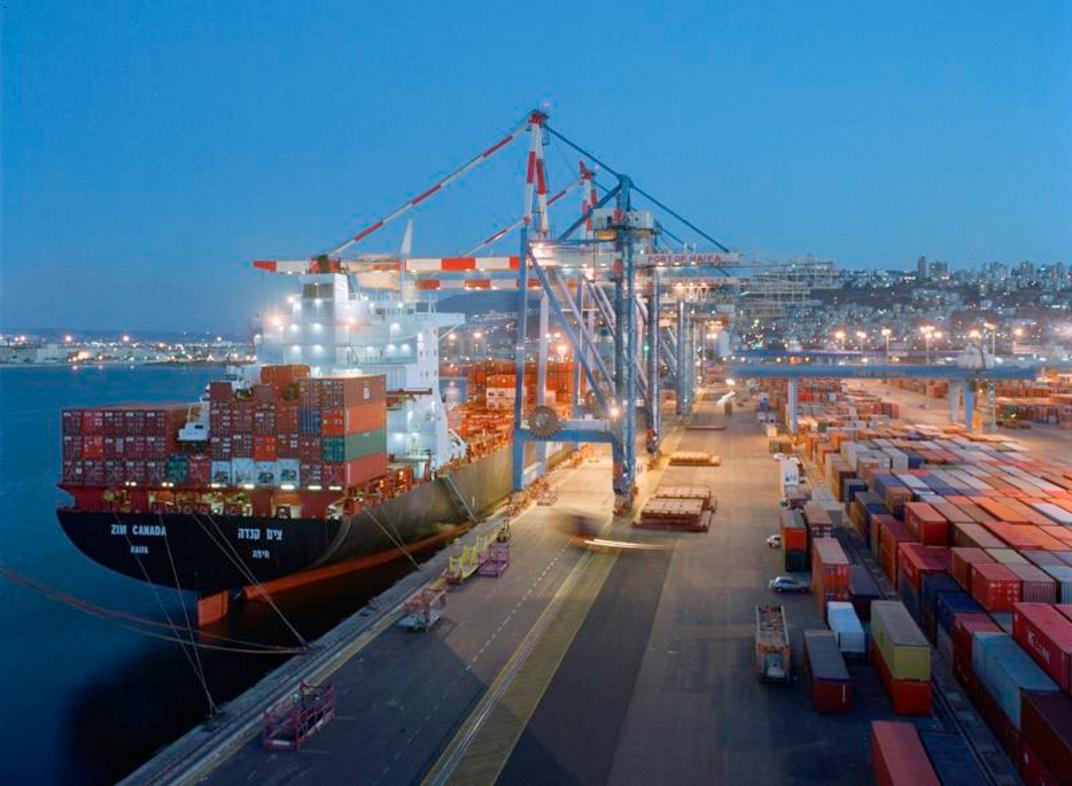Haifa port in northern Israel is bracing itself for more local competition, one of several challenges the port is preparing itself for as it waits to see its trade and connections with Asia increase.
New ports operated by TIL and Shanghai International Ports Group, the latter of which is expected to be just up the road from Haifa and have similar container capacities, are designed to stir up a sector where powerful unions and a statist approach limit efficiency. The new Haifa port is scheduled to open in 2021.
Negotiations are ongoing between the government, lawyers from the Port of Haifa and trade unions to allow changes, but so far not successfully, according to Mendi Zaltzman, CEO of Haifa Port.
“There is not any sign yet. It puts a little shade on our expectation for this year,” Zaltzman told Asia Cargo News in an interview in his Haifa office.

While the port is preparing ready for these challenges, it is contending not just with a tricky economy but with a sometimes-torturous position brought on by Israel’s political situation.
Haifa moved just over half of Israel’s cargo. Its nearest rival – both geographically and in terms of volume – is Ashdod, which took in 43%, with the remainder going via Eilat on the Red Sea and a smattering other small ports. Haifa’s lot included 1.215 million TEUs, 45,000 cars and 24,000 tonnes of general cargo, including grains.
This year, the goal for the company is to reach 1.35 million TEUs. “It’s a pretty moderate increase, but it’s more than the Israeli economy is growing,” Zohar Rom, Haifa’s head of marketing told Asia Cargo News.
Transhipment barely factors in to Haifa’s volume. The port is well-located for transhipment, but surrounded as it is by either unfriendly neighbours such as Egypt and Jordan or war zones such as Syria, it doesn’t tend to happen.
Labour costs also need to be factored in. “Because our salary cost is quite heavy or high, we don’t sell our services for transhipment except (for) those containers that are captive in the vessel,” explained Zaltzman.
Against this is Haifa’s productivity, especially when compared to other Israeli ports. Haifa manages 29.5 container moves per hour, substantially higher than Ashdod’s 22.5 moves per hour, Ram said.
“For the big lines especially, it’s very important to get such efficiency,” Ram said. “[They] save a lot of money on the bunker.”
Indeed, Haifa’s optimism for this year is based on those big lines, especially the 2M Alliance and Indus. The former, which calls westbound, is expected to add an eastbound stop, according to Zaltzman. Indus may eventually help access trade from the emerging giant India. “We have no exact information about when the eastbound will start to call at Haifa,” Rom added.
There is another possibility. While officials at Israel’s national shipping line Zim were not available for comment, the line has recently undergone changes which have produced a more aggressive, forward-looking management.
One of the calculations Haifa must consider is that Zim could then add large vessels capable of reaching Asia and North America to its fleet.
What those big ships could carry is even more interesting. Currently, agricultural products from Israel can make it to Singapore in a reasonably efficient and economic state, but as port officials noted, Hong Kong, Ningbo and Japan are a little too far away. However, agricultural development and a new generation of reefers might allow it to improve that time line.
The precedents for this are interesting, as Israeli high-tech products, such as chips and boards for computers, are already sent via Haifa. “Not everything is by air,” said Rom. There is also another case to mull: pharmaceuticals, which also move increasingly by ship and via Haifa.
More immediately, though, Haifa is looking to the regional market. Fraught though the political relationships within the Middle East may be, some economic linkages are being developed. “It is quite attractive for Jordanian cargo to go through the Port of Haifa,” said Zaltzman.
Attractive, but also complicated. There once was good trade in the region, particularly with a lot of agricultural products from eastern Turkey going overland to Jordan, until it was blocked by Syria’s vicious civil war. Now, those products are starting to go via Haifa in trucks with Turkish drivers, as via the Suez Canal and the Jordanian Port of Aqaba is an expensive and time-consuming proposition.
“The potential is for more than 1,000 trucks a week, but the actual numbers are closer to 100 trucks a week. It’s a security issue, not something that depends on the port,” said Ram.
There is more potential here, mostly of the sort leading to some intriguing speculation. An electric train line, for example, is being built from Haifa to the Jordanian border. “It tells us something about the future,” Rom acknowledged.
Haifa is prepping its own infrastructure for whatever happens.
On the hardware side, it plans to use its options to purchase more cranes, according to Zaltzman. Already, it is installing two new ship-to-shore cranes manufactured by Kocks in its Carmel Terminal and three new Kone rail-mounted gantry cranes to handle the terminal’s big storage area. Within a year or so, it will operate nine ship-to-shore cranes and 15 RMGs in this terminal, he said.
Haifa is also building a 17-lane spiral gate – something it currently lacks. Aware that technology will be used much more extensively by its new competitors, Haifa is joining them. “Everything will be automatic,” said Ram.
By Michael Mackey
Correspondent | Tel Aviv